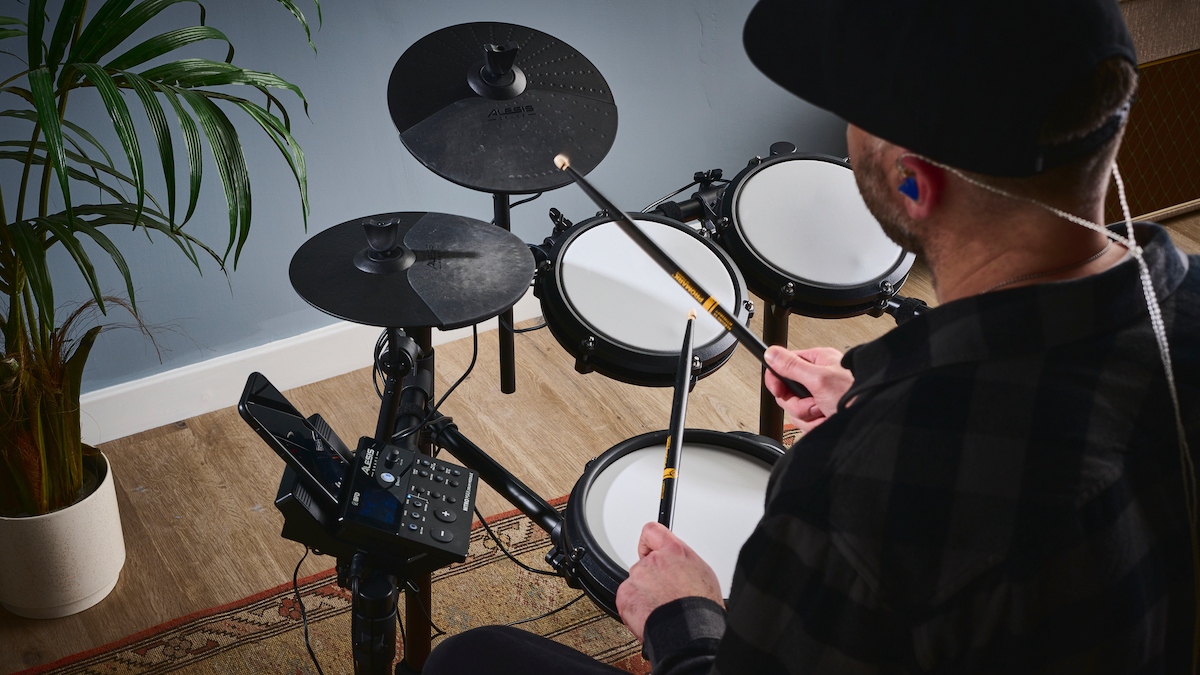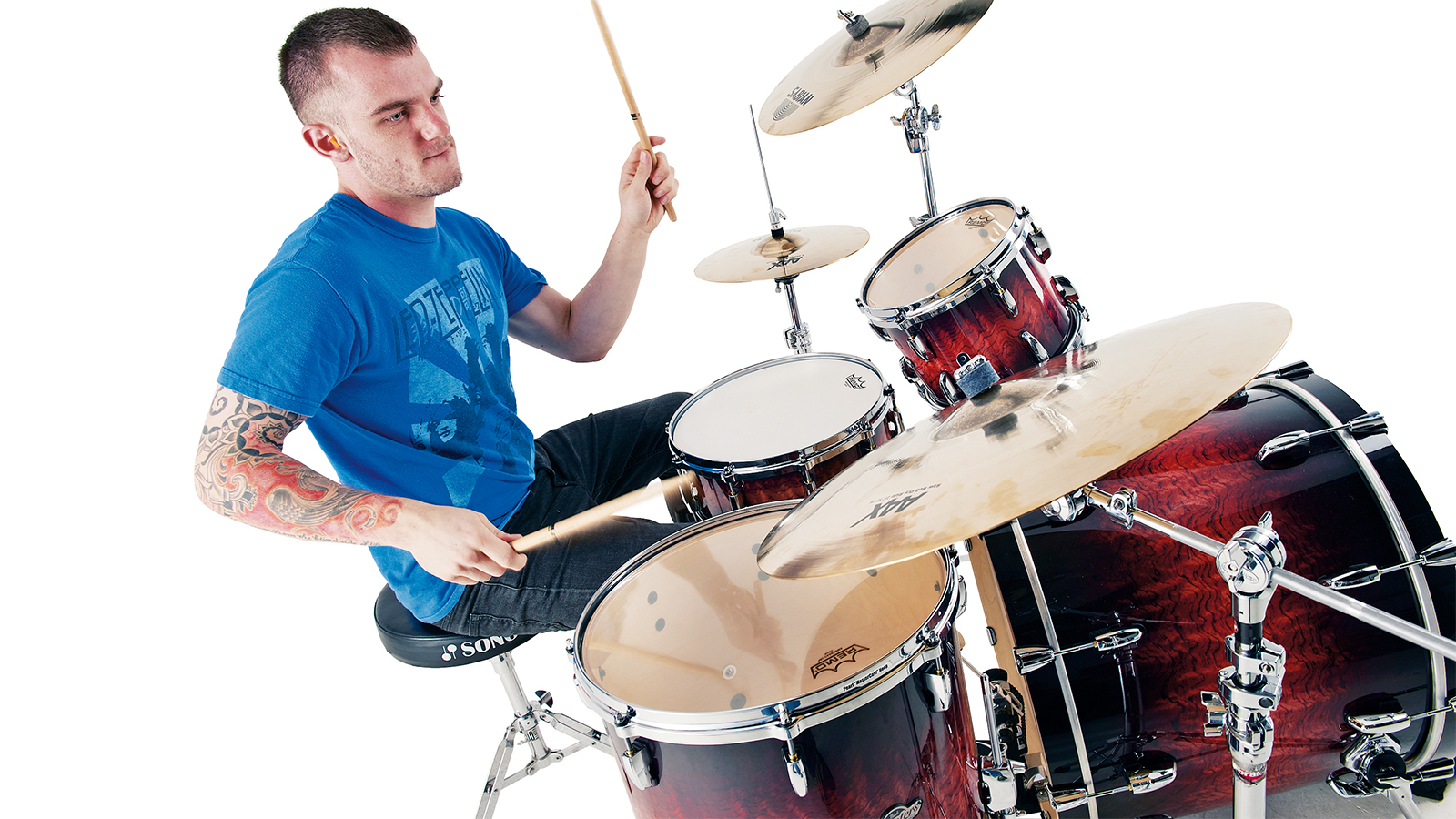"Every effort should be made to accommodate one if possible": Is an acoustic or an electronic drum kit better for beginners?
Is it better to learn on acoustic or electronic drums? We tackle the topics of noise, space, cost, playability and more to help you decide

DRUMS WEEK 2025: For those with money to burn, a top-of-the-range electronic drum set by the likes of Yamaha, Roland or Alesis enables a playing experience pretty much on a par with that of a real acoustic drum kit, thanks to its full-sized mesh heads, stellar multi-sampled sounds, effortless studio connectivity and so much more.
But what about the other end of the scale, where the tentative beginner drummer, perhaps lacking the space or neighbourhood tolerance required to house an acoustic set, will be looking to make their first instrumental investment?
Can a five-piece e-drum set costing a few hundred dollars/pounds really hope to emulate the feel and sonics of a ‘proper’ kit in the same price bracket, and do the unique digital advantages it offers counterbalance any compromise in authenticity or ability to progress behind the kit? Let’s look at all the pros and cons to find out…
Acoustic vs electronic drums: Noise
For many fledgling (and, indeed, veteran!) drummers, the domestically challenging volume levels of the acoustic drum kit are a potential show-stopper - and no one really enjoys playing on deadheads or drum mutes.
Electronic drums, on the other hand, deliver their sampled sounds via volume-adjustable headphone and line outputs every time a pad is struck.
Rubber pads are now mostly reserved for e-kit cymbals rather than drums. While they are far from silent, the difference in volume between these and acoustic cymbals is night and day. And mesh pads, which you'll find on most quality e-kits - even at the beginner end of the spectrum whereyou should find at least a mesh snare pad - are even quieter.
If noise is your main concern as a new drummer, an electronic drum set is definitely the quieter option. There are also many ways to make your e-kit even quieter, which we explore in this feature.
Winner: electronic drums
Acoustic vs electronic drums: Space

Even the smallest full-size acoustic drum kit is a big, hefty collection of things, and the kick drum and cymbal stand legs alone outline a considerable footprint. Again, the beginner electronic drum set walks away with this one; its racking, small pads and kick tower add up to a comparatively compact rig that can often be folded away when not in use, making it even more space-saving.
Winner: electronic drums
Acoustic vs electronic drums: Portability
Another easy win for e-drums, as most modern beginner kits fold down to a readily manageable, almost flatpack arrangement, while the acoustic alternative barely packs down; you could stack acoustic drums in a pinch when the kit isn't being used, as long as you're ok with a bit of set up time when inspiration strikes. Acoustic kits also generally demand separate cases for each drum, plus two more for cymbals and hardware if it’s heading for long-term storage or leaving the house.
Winner: electronic drums
Acoustic vs electronic drums: Cost
Technology being what it is, the saying, ‘You get what you pay for’ obviously applies more directly to electronic drums than it does their acoustic counterparts, and the meaningful difference between a $/£500 drum kit and a $/£6,000 one is less profound than the increase in playability and sound quality that the equivalent upgrade gets you in the e-drum market.
So, while a beginner acoustic kit may well see you through those formative years and some way beyond, you’ll quite quickly outgrow a similarly priced e-drum kit as your skills and aural discernment improve.
Winner: acoustic drums
Acoustic vs electronic drums: Features

Unsurprisingly, the electronic kit holds all the aces in this particular game, providing not only tons of tweakable onboard sounds, glamorous DSP effects, and convenient MIDI and audio output, but also a variety of genuinely useful coaching and training tools that are of huge value to the aspiring newbie.
From exercises designed to develop timing, speed and consistency, to full playalong tracks and Bluetooth connectivity to link up your smart device for jamming to Spotify, it’s here that e-drums trounce the resolutely - albeit reassuringly - low-tech architecture of the acoustic kit.
Winner: electronic drums
Acoustic vs electronic drums: Playability
There’s simply no comparison between the natural feel and directness of a real drum head and the hard, triggering response and smaller target area of an 8” mesh or rubber pad. Thankfully, most budget electronic kits these days include a much more ‘realistic’ mesh head for (at least) the all-important snare drum - ideally dual-zone for rimshots - which we would argue is a must-have.
For added realism, a kick drum tower, as opposed to a beater-less pedal, should also be on the e-drummer’s shopping list, along with a dual- or triple-zone ride cymbal if possible. Even with all those boxes ticked, though, the acoustic kit still can’t be beaten in the playability department.
Winner: acoustic drums
Acoustic vs electronic drums: Playing live
With budget e-drums not necessarily blasting out the most convincing sounds, and requiring some form of electronic drum amplification to be heard in a live setting - be it through the venue PA or a dedicated amp and speakers - the acoustic kit clearly has the edge on stage when it comes to rock, jazz and other electric/acoustic styles.
Having said that, the MIDI output of the e-drum kit facilitates velocity-sensitive triggering of synths, samplers and drum machines, either hardware or laptop-hosted software, opening up an endless universe of tonal possibilities that transcends the earthbound limits of acoustic drums. If your band is of an electronic bent, this alone could seal the e-drum deal.
What's more, many modern e-kits are eschewing the traditional rack with flat pads aesthetic in favour of full-size wooden shells with triggers built in - even at the more affordable end of the spectrum. So, if you've been unsure about using an e-kit on stage, those worries should have all but evaporated by now.
Winner: draw
Acoustic vs electronic drums: Recording

The samples built into your affordable e-drums aren’t really going to cut it as a bona-fide acoustic kit emulation in the studio any more than they will on stage - but once again that MIDI output proves an invaluable inclusion.
Connecting it to your Mac or PC lets you use those pads to instead trigger amazing multi-gigabyte sampled drum kit plugins such as Toontrack’s Superior Drummer 3 or FXpansion’s BFD3 in any software DAW, and capitalise on the creative power that MIDI recording and editing brings to the table. It's pug and play recording at its finest.
Committing an acoustic kit to ‘tape’, meanwhile, calls for a decent set of drum microphones, an engineer who knows what they’re doing, and a properly treated recording space - that’ll be a recording studio, then. We're still strong advocates for recording 'real' drums, but there's no denying that it's the more labour-intensive and technical approach. For beginners, simplicity is key.
Winner: electronic drums
Acoustic vs electronic drums: Transitioning between kits
The final consideration in our percussive wood/mesh face-off is how readily technique developed on e-drums translates - as, ultimately, it must - to the acoustic kit.
To make this crucial switch as painless as possible, mesh pads (for the snare at the very least) and a kick drum tower are essential, as these will get you significantly closer to the physicality of drumsticks/beater on Mylar than rubber pads and a beaterless pedal ever could.
Even with those criteria fulfilled, though, moving from the 8” pads of the entry-level e-drum kit to the 14” snare and 10-16” toms of the real deal is always going to involve a period of adjustment.
Winner: N/A
Acoustic vs electronic drums: Verdict
So where does all this leave us? Well, in a nutshell, for the novice drummer, an acoustic kit is the better choice from a developmental perspective, and every effort should be made to accommodate one if and when at all possible.
However, when space and/or noise are issues, today’s affordable e-drum setups make more than acceptable substitutes, especially if you opt for a model with mesh heads (on the snare at least) and a kick drum tower.
And, of course, onboard training tools, ‘produced’ sounds and MIDI output all make for compelling extras, especially if you’re looking to integrate your drums into a home studio.
Want all the hottest music and gear news, reviews, deals, features and more, direct to your inbox? Sign up here.
A music and technology journalist of over 30 years professional experience, Ronan Macdonald began his career on UK drummer’s bible, Rhythm, before moving to the world’s leading music software magazine, Computer Music, of which he was editor for over a decade. He’s also written for many other titles, including Future Music, Guitarist, The Mix, Hip-Hop Connection and Mac Format; written and edited several books, including the first edition of Billboard’s Home Recording Handbook and Mixing For Computer Musicians; and worked as an editorial consultant and media producer for a broad range of music technology companies.
